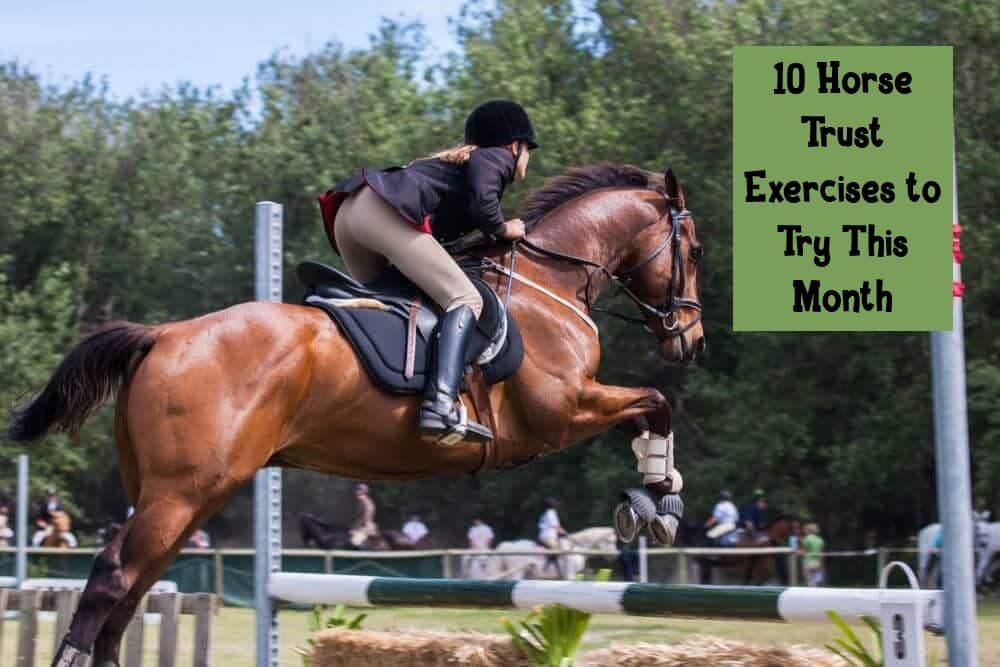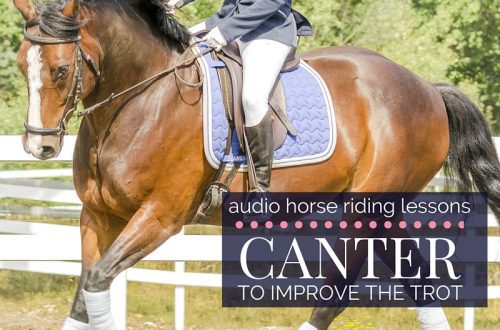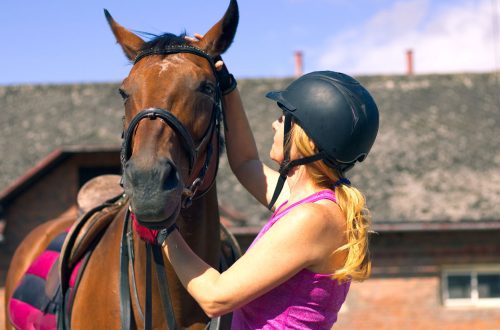
Moving towards trust through games with a horse
Moving towards trust through games with a horse
Do you want your horse to become reliable and safe? So that she would agree to walk with you over bridges and narrow paths, cross streams and ditches, enter a horse carrier without unnecessary “questions” and feel calm even in an atmosphere of competition? To do this, you need to gain confidence from the horse.
Building trust can be fun and easy – there are many things you can do to build your horse’s trust and your exercise will be fun for both you and him.

I want to share a few ideas with you:
1. Pole reining. This is an easy exercise. Start by stopping halfway (above the pole). Then rein in the horse – let him take a step or two back. Once the horse is comfortable with this, you can try reining him over several poles in a row. Pole reining teaches your horse to raise his legs and not panic if he bumps into something or steps on it.
2. Knock on the box. The exercise may seem difficult at first because the horse will not know what you need. Once the horse understands the task, he will do it with pleasure.
Start by simply walking your horse up to the box (you can use plastic crates as long as your inventory is safe). Encourage the horse to sniff and inspect the box by pointing its head towards it. If the horse is interested and starts inspecting the box, reward him for doing so. If the horse hits the box, try to give him encouragement at the same time so that he understands that he fulfilled your request correctly. If the horse does not want to touch the box, try to slowly, step by step, bring him closer to him until he touches. Lead your horse slowly so he doesn’t jump over the box and get scared.
When the horse touches and turns over the box, he learns not to be afraid of objects that he can hit, turn over, which can make noise when touched.
3. We stand in a hoop (hula hoop). Lay the hoop on the ground. Bring your horse up to him and let him sniff him. Then try to get the horse into the hoop so that he gets into it with his front legs. Reward the horse when he understands you and completes the task correctly! When you can ask your horse to put his front legs in the hoop, and he will comply with your request without any problems, try to do the same with the hind legs.
This game helps teach the horse that he won’t get hurt if he puts his feet in something.
4. We walk on a tarp. Lay a tarp on the ground, let the horse sniff and inspect it. Then ask her to walk on the tarp. Be prepared for the fact that, upon stepping on the tarp for the first time, the horse may suddenly jump away, frightened by an unfamiliar sound.
Gradually train the horse step by step. When he can walk on the tarp without any problems, try asking him to trot on it, halt the horse, ask him to walk on a tarpaulin of a different color or quality. If you don’t have a tarp, you can use an old shower curtain.
5. Push the ball. This is a very fun exercise and once your horse gets the hang of it he will love it.
Train your horse to push the ball the same way you taught him to hit the box and push it. This time when the horse pushes the ball (nose or foot) we give him a reward, a treat. Pretty soon, your horse will be willing to push the ball for more rewards. Then make the game more challenging – try asking the horse to push the ball in a certain direction (between the posts, for example) or even pass the other horse or you!
Don’t be afraid to experiment! Introduce your horse to new things, challenge him with new challenges, and make them harder as you progress. The more confident the horse is, the safer it will be to be around him. Once your horse has learned to play these games from the ground, you can gently try them on horseback as well.
Don’t forget to reward the horse – he needs to know when he does what you want. To do this, you need to pause, “lag behind” the horse, you can give him a treat or scratch his withers – it all depends on what motivates your horse more.
Try to be slow and patient. If you rush the horse, it will not lead to anything good. Slow and right is better than fast and wrong. This is not a race!
If your horse can play all of the above games, then it means that his level of trust in you is high and you can try something new. Now you can get creative – what more can you ask your horse to do?
Lindsey Partridge (source); translation by Valeria Smirnova.





